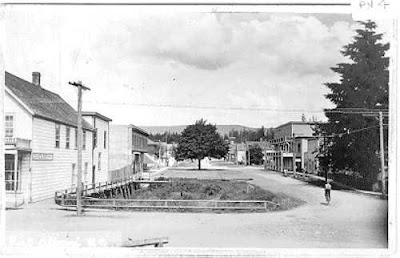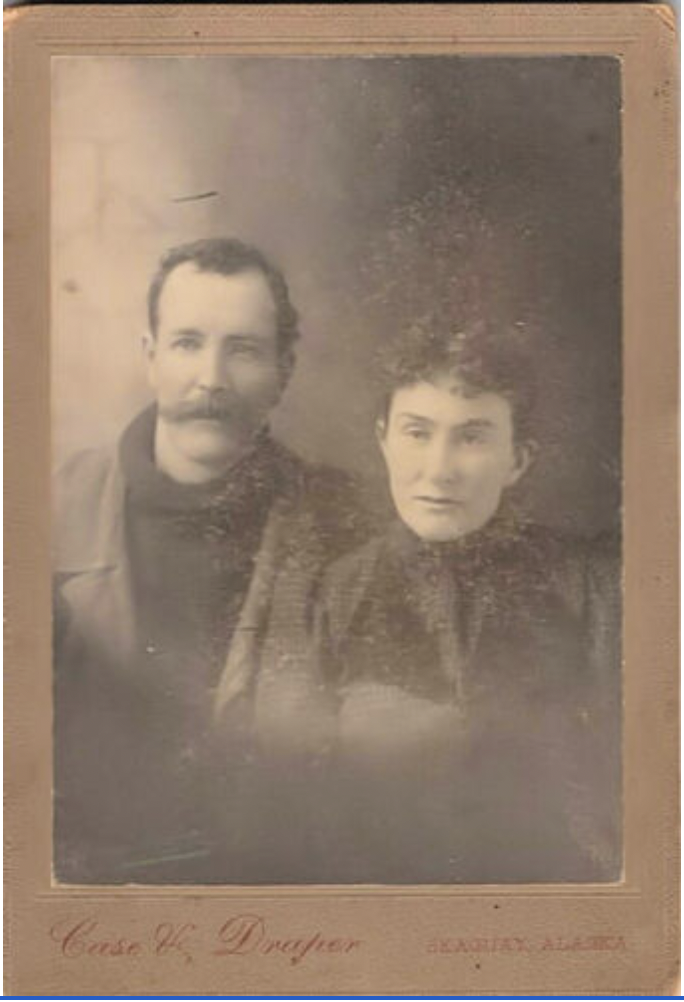
Georgia Amanda Pineo and Holmes Dewolfe were born in Berwick Nova Scotia but Holmes’s family moved to Port Alberni on Vancouver Island B.C., around 1893. Holmes went to school in Victoria in 1898 and then moved to Atlin.
Holmes and his cousin Georgia fell in love and came to Skagway in 1909 to marry on June 24. The marriage did not last long though, because only a year later, on October 30, 1910 Georgia died at the age of 24. Holmes remarried in 1915 but he too died in Port Alberni, on this day, January 1, 1927 at the age of 43.
Seen above is Port Alberni about 1915 with the Pineo family hardware store on the far left.
The Register, Berwick, Kings Co., Nova Scotia.
Vital Statistics 1909; Family search









